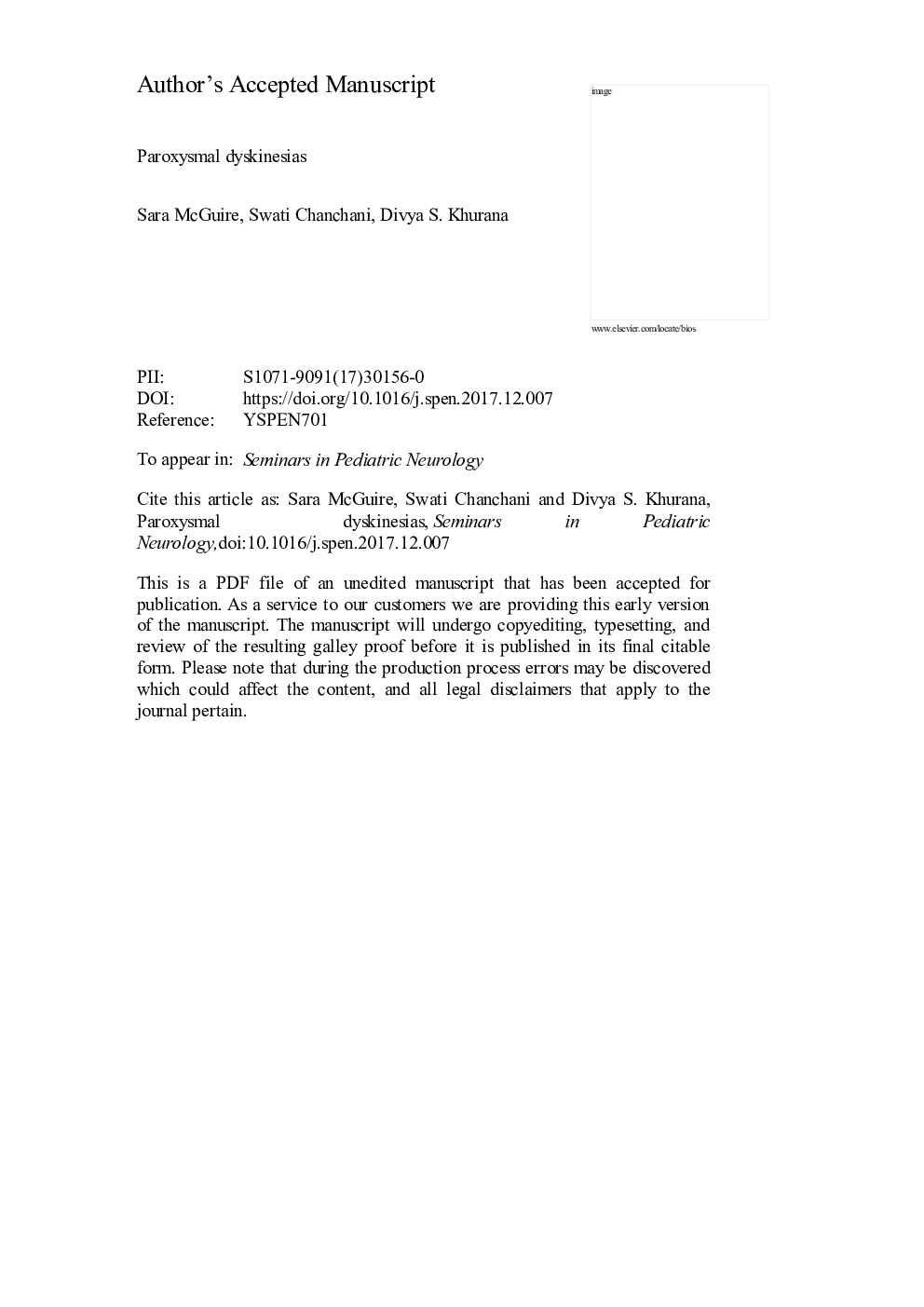| Article ID | Journal | Published Year | Pages | File Type |
|---|---|---|---|---|
| 8690967 | Seminars in Pediatric Neurology | 2018 | 24 Pages |
Abstract
Paroxysmal dyskinesias (PD) are hyperkinetic movement disorders where patients usually retain consciousness. Paroxysmal dyskinesias can be kinesigenic (PKD), nonkinesigenic (PNKD), and exercise induced (PED). These are usually differentiated from each other based on their phenotypic and genotypic characteristics. Genetic causes of PD are continuing to be discovered. Genes found to be involved in the pathogenesis of PD include MR-1, PRRT2, SLC2A1, and KCNMA1. The differential diagnosis is broad as PDs can mimic psychogenic events, seizure, or other movement disorders. This review also includes secondary causes of PDs, which can range from infections, metabolic, structural malformations to malignancies. Treatment is usually based on the correct identification of type of PD. PKD responds well to antiepileptic medications, whereas PNKD and PED respond to avoidance of triggers and exercise, respectively. In this article, we review the classification, clinical features, genetics, differential diagnosis, and management of PD.
Related Topics
Life Sciences
Neuroscience
Developmental Neuroscience
Authors
Sara MD, Swati MD, Divya S. MD,
